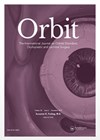
Journal Reviews archive for 2023
Comparison of nylon versus polyglactin sutures
The purpose of this study was to compare postoperative complications between incision closure by nylon suture and polyglactin suture in paediatric cataract surgery. This was a prospective single-centre non-randomised study of 82 eyes (41 children) with median age of four...
Change in psychosocial, quality of life and anxiety after strabismus surgery
The authors aimed to define the impact of surgical correction on psychiatric problems, health-related quality of life and anxiety levels in children and their parents. This was a cross-sectional study of 39 children with strabismus and their parents. All children...
Sensorimotor outcomes following paediatric ocular trauma
A retrospective assessment of sensorimotor outcomes was conducted in paediatric patients after ocular trauma to evaluate potential predictors of poor outcome including time of treatment deprivation, Paediatric Ocular Trauma score (POTS) and patient characteristics. The review was from 2006-2020 and...
Association between neurodegeneration and macular perfusion in the progression of diabetic retinopathy
In this prospective three-year longitudinal study, the authors aimed to explore the relation between retinal neurodegenerative changes and vessel closure (VC) in individuals with non-proliferative diabetic retinopathy (NPDR). The participants included 74 individuals with type 2 diabetes, NPDR, and Early...
Single case report of horizontal gaze paresis due to medial pontine haemorrhage
The authors report a single case (80-year-old female) of bilateral horizontal conjugate gaze palsy due to a dorsal median pontine haemorrhage. The patient presented with skew deviation, bilateral horizontal conjugate gaze palsy, vertical gaze palsy, ipsilateral lower motor neuron facial...
Therapeutic options for advanced cutaneous basal (BCC) and squamous cell carcinomas (SCC)
This article discusses the use of topical and systemic therapy in the management of advanced periocular tumours. It focuses on those that have gained United States Food and Drug Administration approval; namely imiquimod, vismodegib, sonidegib, pembrolizumab and cemiplimab. Imiquimod is...
Predicting ischemic lesion location using perimetry
The authors present a retrospective records review, using the search terms homonymous hemianopia, visual field loss and MRI. Only posterior circulation artery territory ischemic strokes were included. Demographics, stroke details and initial and follow-up with 24-2 SITA Standard perimetry results...
Exploring the potential of neurodegenerative disease screening within age-related eye disease research
The authors recruited healthy controls aged between 60 and 75-years-old, previously enrolled into a registry as patients following cataract surgery without age-related macular degeneration (AMD). Exclusion criteria included dense cataract, retinal disease, ocular inflammatory disease, moderate glaucoma, optic neuropathy, cancer,...
Yolk sac tumours of the orbit and sinonasal tract
This paper outlines two case reports of patients with yolk sac tumours (YSTs) and carries out a review of the literature on this rare malignancy. YSTs are a type of germ cell tumour and primarily occur in the gonads. Ten...
Hughes flap for lower lid retraction
This is a retrospective case series looking at the use of Hughes flap for cicatricial lower lid retraction. Fourteen patients were identified across five different hospitals with varying aetiologies ranging from previous lid lesion excision and reconstruction to trauma. The...
Differentiating orbital tumours on MRI
This is a literature review examining the ability of specific MRI modalities to differentiate between benign and malignant tumours of the orbit. The authors identified 29 articles reporting diffusion weighted image (DWI) values and corresponding apparent diffusion coefficients (ADC) for...
Care providers view on how to improve care for paediatric conjunctivitis
The authors present a qualitative study. Purposeful sampling was used to recruit physicians or advanced practitioners for paediatric care in emergency, urgent or primary care settings. Semi-structured interviews were either held in-person or by telephone. All participants recruited commonly encountered...











